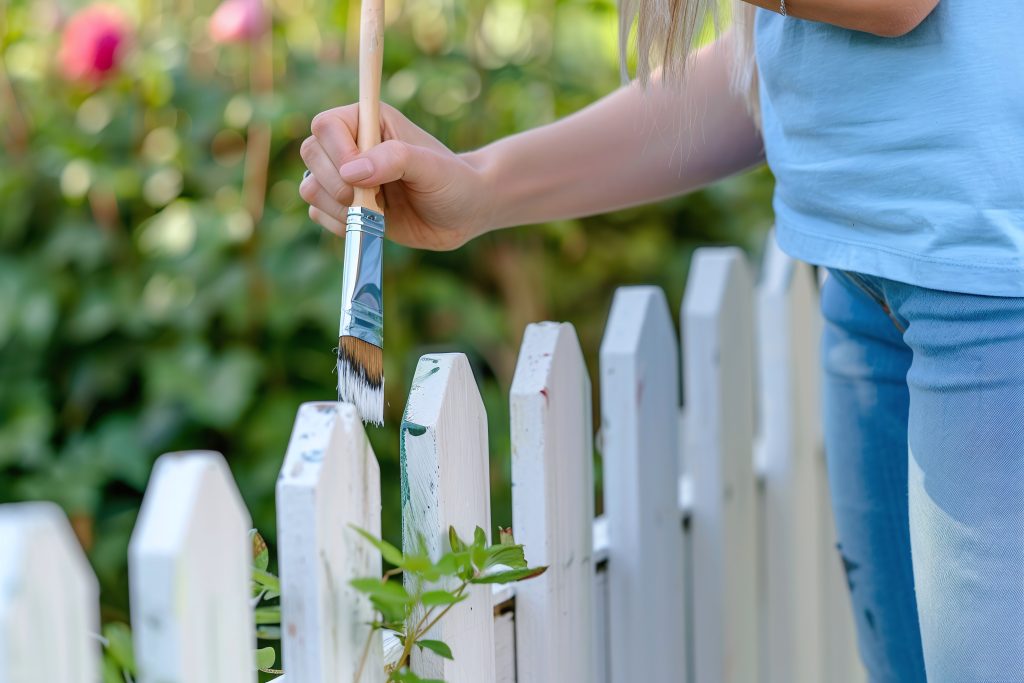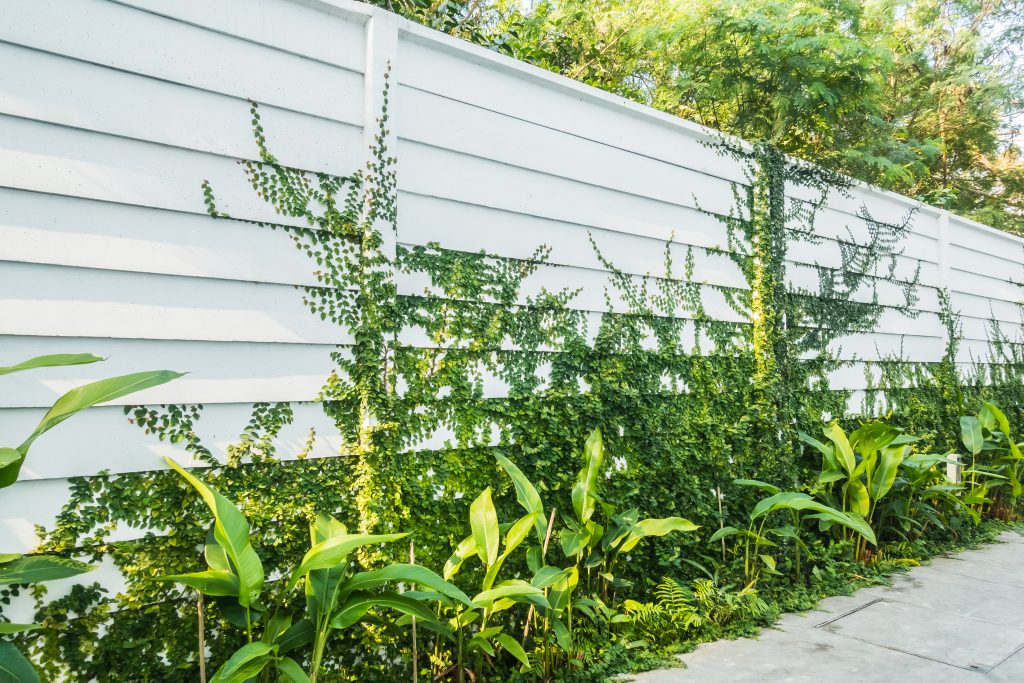
Fence protection is one of the most overlooked aspects of property maintenance. People invest thousands in building fences but forget that without the right protection, even the strongest fence can break down in just a few years.
Fences aren’t just about looks. They provide security, mark boundaries, protect privacy, and can even boost your property value. So why wouldn’t we protect them the same way we protect our roof or foundation?
Let’s answer some of the most common questions people search about fence protection and explore how to make your fence last longer, look better, and require fewer repairs over time.
How Does Fence Protection Help Save Money?
- Repairs are expensive. Replacing warped boards, fixing leaning posts, or addressing rust can cost hundreds (or thousands).
- Regular fence protection such as sealing, staining, or applying anti-rust coatings extends your fence’s life by years.
- Preventive care reduces the risk of pest damage, rot, and weather-related decay.
Neglecting your fence today can easily turn into a costly replacement tomorrow.
What Types of Fence Materials Need Protection?
Every fencing material needs some form of protection, though the approach varies:
- Wooden fences: Most vulnerable to water, pests, and sun. Require sealing, staining, and regular checks for rot or termites.
- Vinyl fences: More weather-resistant but can become brittle with age. Regular cleaning and UV protection are key.
- Metal fences: Strong but prone to rust. Powder coating or rust-proof paint offers long-term fence protection.
- Composite fences: Low maintenance but still benefit from cleaning and UV-blocking treatments.
Best Fence Protection Techniques for Every Season
Fence protection isn’t a one-time task but it’s seasonal. Here’s how to keep your fence in top shape throughout the year:
- Spring: Inspect for winter damage. Clean off mildew and apply fresh protective coatings if needed.
- Summer: High sun exposure dries out wood. Use UV-blocking stains or paints.
- Fall: Remove fallen leaves and trim back plants that trap moisture.
- Winter: Keep snow from piling at the base to avoid rot and shifting.
A year-round approach ensures your fence stays strong and safe in all weather conditions.
What Damages a Fence the Most?
Here are the top culprits behind early fence damage:
- Moisture: Leads to mold, rot, and wood warping.
- UV rays: Cause fading, drying, and cracking.
- Pests: Termites and ants love untreated wood.
- Neglected landscaping: Overgrown vines trap water and weigh down panels.
- Improper installation: Posts without concrete support can shift or sink.
With proper fence protection, most of these issues are easily avoidable.
Is Fence Protection Important for New Fences?
Yes, starting early is essential. New fences may look strong, but materials degrade fast if unprotected. Wood especially needs to be sealed or stained within weeks of installation. Even metal fences should be coated with anti-rust protection from day one.
Waiting for signs of damage is a mistake. Start fence protection as soon as your fence is installed.
Do Decorative Fences Still Need Protection?
Absolutely. A lot of homeowners choose fencing styles based on design, picket fences, horizontal slats, or ornamental ironwork. But beauty means nothing if the fence collapses, rusts, or warps.
In fact, decorative fences often need more protection since thinner boards or intricate shapes are more vulnerable to weather.
A stylish fence with zero protection won’t stay beautiful for long.

How Landscaping Choices Affect Fence Protection
Believe it or not, your plants may be damaging your fence.
- Vines and shrubs growing directly on the fence trap moisture and speed up decay.
- Trees too close can cause root damage or drop sap, which eats into coatings.
- Irrigation systems that spray your fence daily can rot wood or rust metal.
Smart landscaping supports fence protection. Keep plants trimmed and consider installing garden borders to create distance.
The Link Between Fence Protection and Home Value
Buyers notice the condition of your fence, whether they say it or not. A protected, well-maintained fence:
- Shows buyers the home is cared for
- Enhances curb appeal
- Reduces the chance of negotiation around “repair credits” during sale
If you’re planning to sell in the next few years, investing in fence protection now pays off.
Should You DIY or Hire a Pro?
DIY fence maintenance is doable for many homeowners. But hiring a professional brings extra benefits
- They understand how soil, moisture, and sunlight affect fencing
- They use commercial-grade products for longer-lasting results
- They spot small issues before they become expensive repairs
If you’re short on time or unsure what products to use, professional fence protection services can be worth the cost.
What Does the Future of Fence Protection Look Like?
- Smart coatings: Future paints may change color when it’s time to recoat.
- Sensor alerts: New systems may warn you if a fence post shifts or water damage occurs.
- Eco-safe formulas: Biodegradable sealants are becoming more popular with green-conscious homeowners.
The goal is to make fence protection smarter, easier, and more sustainable.
Conclusion:
Fence protection is about being smart. A fence is an investment that protects your home, family, and privacy. Whether you’ve just installed a new fence or are trying to keep an older one standing strong, the right protection plan makes all the difference.
It doesn’t have to be complicated. Just consistent. At O’Fallon Family Floors, we help protect every part of your home, including your fence. Our team proudly offers expert fence protection solutions to keep your property safe, durable, and looking its best year-round.
From routine inspections to seasonal maintenance, every small step you take helps extend the life of your fence and keeps your property looking its best for years to come.
Frequently Asked Questions
How often should I stain or seal my wood fence?
Every 2–3 years, depending on climate and exposur
Is vinyl fencing really maintenance-free?
Not entirely. It still needs cleaning and UV protection.
What’s the best way to prevent rust on a metal fence?
Use powder coating or apply a rust-inhibiting primer and paint.
Can I pressure wash my fence for protection?
Yes, but use low pressure to avoid damaging the material, especially for wood.
Are there eco-friendly fence protection products?
Yes. Look for water-based, low-VOC sealants and biodegradable cleaners.
Should I use the same product for all types of fences?
No. Use material-specific protection: wood sealers, vinyl cleaners, and metal coatings.
Does fence height affect protection needs?
Taller fences catch more wind and sun, so they often need more frequent checks.
Can I apply protection myself?
Yes, with basic tools like a brush, sprayer, and cleaning supplies. Just follow instructions carefully.
How do I know if my fence is beyond saving?
Look for rotting posts, sagging panels, or rusted connections. If repairs outnumber protected sections, consider replacement.
How much does professional fence protection cost?
Expect to pay $3–$7 per foot depending on fence type and condition.
For more information, visit: Time Business News

